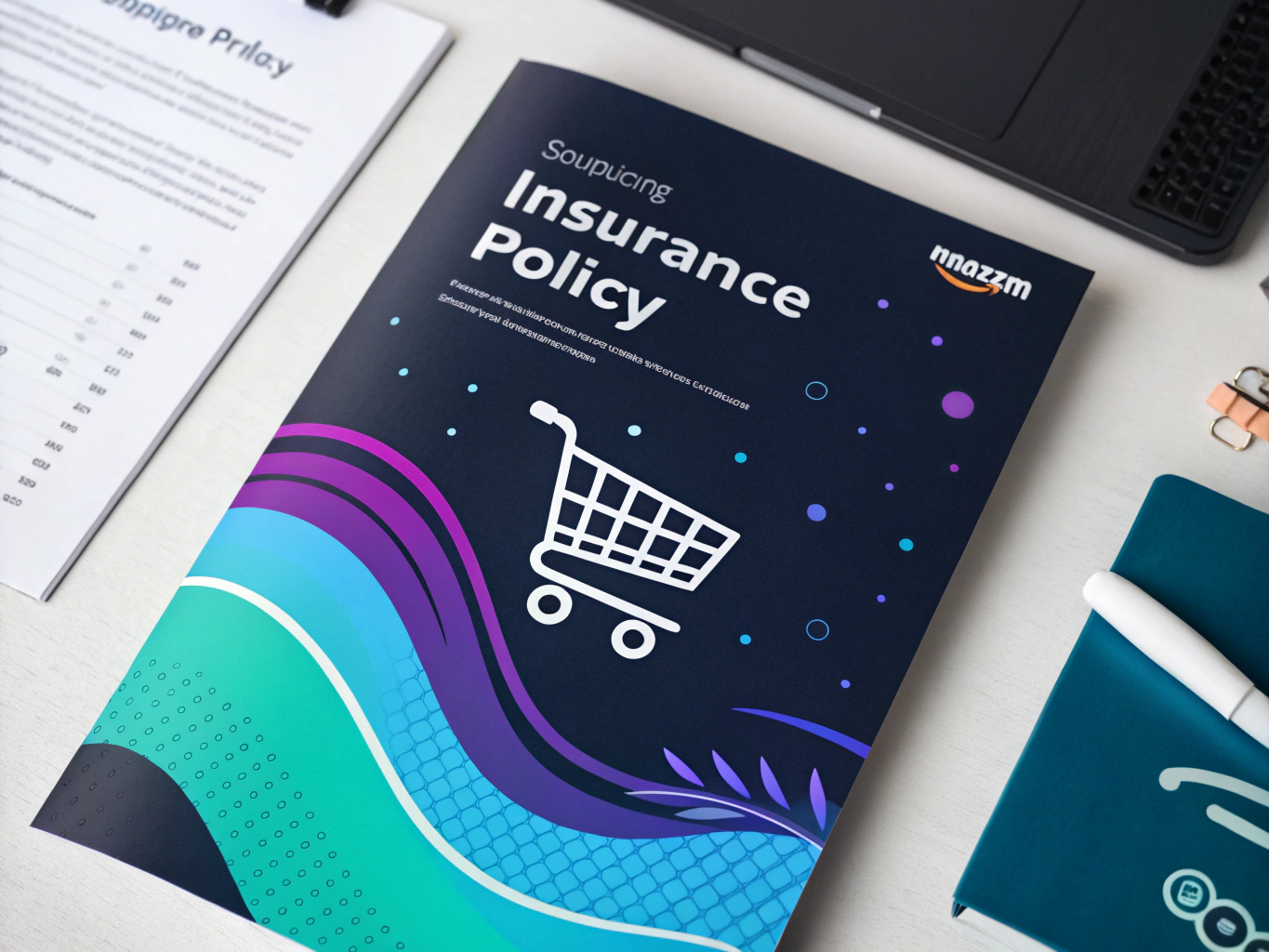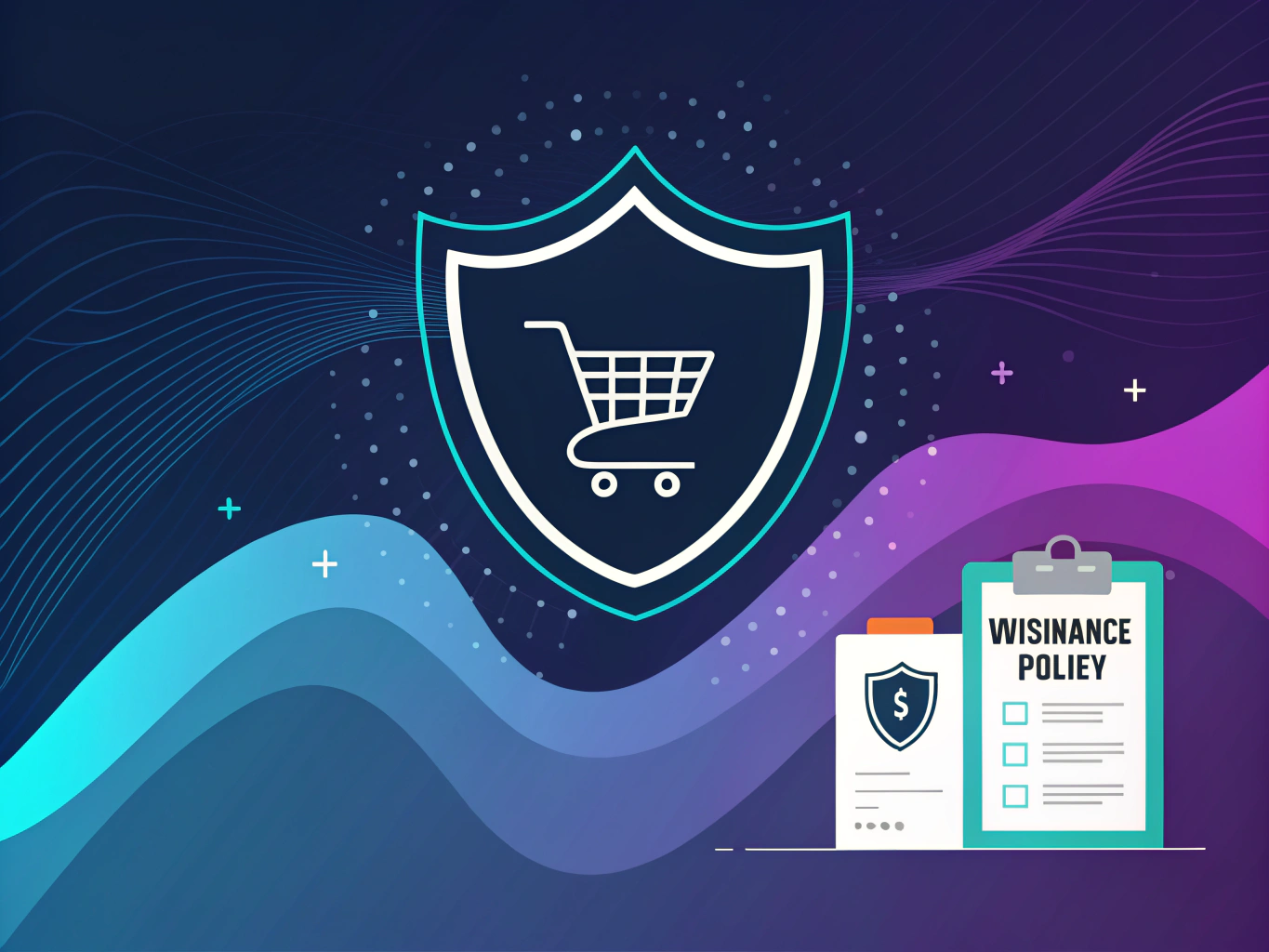Understanding Amazon’s Insurance Requirements in 2024
Let’s face it – insurance isn’t exactly the most thrilling topic for most Amazon sellers. We’d rather geek out about product launches, optimization strategies, or the latest AI tools reshaping ecommerce. But here’s the thing: proper insurance coverage could be the difference between your business thriving or taking a catastrophic hit from a single liability claim.

I’ve seen too many sellers treat insurance as an afterthought, only to scramble when Amazon flags their account or, worse, when they’re faced with a product liability claim. Think of insurance like a force field around your business – you hope you’ll never need it, but you’ll be incredibly grateful it’s there when something goes wrong.
The Basics: When Do You Need Amazon Seller Insurance?
Amazon’s insurance requirements aren’t arbitrary – they’re designed to protect both sellers and customers. The magic number you need to know is $10,000. Once your gross proceeds exceed this amount in sales for three consecutive months, you’ll need to provide proof of insurance within 30 days.
But here’s where it gets interesting (and sometimes confusing): even if you’re below this threshold, you might still want to consider getting coverage. Why? Because liability claims don’t care about your revenue numbers. A $5,000/month seller can face the same product liability issues as a $50,000/month seller.
Types of Amazon Seller Insurance You Should Know About

Think of Amazon seller insurance like a Swiss Army knife – different tools for different situations. Here are the main types you need to understand:
General Liability Insurance: Your First Line of Defense
This is your baseline coverage, and it’s what Amazon specifically requires once you hit that $10,000 threshold. It typically covers:
– Bodily injury claims
– Property damage
– Personal injury claims
– Legal defense costs
The catch? Amazon requires you to list them as an additional insured on your policy. This isn’t just bureaucratic red tape – it’s crucial for protecting both parties in case something goes wrong.
Product Liability Insurance: Because Products Can Be Unpredictable
If you’re selling physical products (which most Amazon sellers are), this is non-negotiable. Product liability insurance covers you when your products cause injury or damage. And trust me, even the most seemingly harmless products can lead to claims – I once saw a case where a simple phone case led to a five-figure liability claim. For more detailed information on product liability insurance, check out this guide.
Additional Coverage Options Worth Considering
Depending on your business model, you might want to look into:
– Inventory insurance (especially if you’re doing FBA)
– Professional liability coverage (for service-based offerings)
– Cyber liability protection (increasingly important in today’s digital landscape)
The Amazon Insurance Accelerator: A Game-Changer?
Amazon recently partnered with insurance providers to make getting coverage easier through their Insurance Accelerator program. It’s like having a fast-pass at an amusement park – quicker access, but not necessarily the best deal for everyone.
Breaking Down the Accelerator Program
The program connects sellers with pre-vetted insurance providers through a digital application process. The upside? Quick approval and guaranteed acceptance of your coverage by Amazon. The potential downside? You might find better rates shopping around independently, especially if you have a clean claims history or sell low-risk products. For more options on insurance policies available to Amazon sellers, check out this comprehensive list.
Cost Considerations and ROI
Insurance costs vary wildly based on factors like:
– Your annual revenue
– Product categories
– Claims history
– Coverage limits
– Business location
A small seller might pay as little as $500 annually for basic coverage, while larger operations could face premiums in the thousands. But here’s the perspective shift you need: don’t think of insurance as an expense – think of it as an investment in your business’s longevity.
The real question isn’t “Can I afford insurance?” but rather “Can I afford not to have it?” One significant claim without proper coverage could wipe out years of profits and potentially end your Amazon selling career. And in today’s increasingly litigious marketplace, that’s not a risk worth taking. For more detailed guidance on Amazon seller insurance, you might want to explore this comprehensive guide.
Types of Amazon Seller Insurance: What You Actually Need

Let’s cut through the noise here – Amazon seller insurance isn’t just another checkbox on your business to-do list. It’s your safety net when things go sideways (and trust me, in ecommerce, things can get pretty sideways).
Think of it like this: you wouldn’t send a spacecraft to Mars without redundant systems and backup plans. Your Amazon business deserves the same level of protection. The question isn’t really “Do I need insurance?” but rather “Which insurance keeps me properly covered without breaking the bank?”
General Liability Insurance: The Foundation of Your Protection
General liability insurance is your first line of defense – and it’s non-negotiable once you hit that $10,000 monthly sales threshold. It’s like the shield generator in Star Wars; without it, you’re exposed to all sorts of attacks (legally speaking, of course).
Here’s what it typically covers:
– Bodily injury claims (someone gets hurt using your product)
– Property damage (your product damages someone’s house)
– Personal injury claims (think: reputation damage)
– Legal defense costs (because lawyers aren’t cheap)
The catch? Amazon requires you to maintain at least $1 million in coverage per occurrence and name them as an additional insured. They’re not being difficult – they’re protecting their own interests, just like you should protect yours.
Product Liability Insurance: Your Specialized Defense
If general liability insurance is your shield, product liability insurance is your specialized armor. It’s particularly crucial if you’re selling physical products (which, let’s face it, most Amazon sellers are).
I’ve seen too many sellers skip this thinking their general liability policy covers everything. Spoiler alert: it usually doesn’t. Product liability insurance specifically protects against claims related to:
– Manufacturing defects
– Design flaws
– Inadequate warning labels
– Product-related injuries
The Amazon Insurance Accelerator: A Game-Changer?
Amazon’s partnership with insurance providers through their Accelerator program is interesting – think of it as their attempt to streamline the insurance process. But is it actually the best deal for sellers? Well, that’s complicated.
The program connects you with pre-vetted insurance providers who understand Amazon’s requirements. The upside? Less hassle with paperwork and faster approval. The downside? You might find better rates shopping around independently.
Cost Considerations and ROI
Let’s talk numbers. Annual revenue plays a huge role in determining your premiums. For most sellers, basic coverage starts around $500-1,000 annually. Seems steep? Consider this: one liability claim could cost you tens of thousands without proper insurance.
Factors affecting your premium:
– Sales volume
– Product category (selling pillows? cheaper than selling power tools)
– Claims history
– Coverage limits
– Business location
Risk Management: Beyond Just Having Insurance

Here’s something most insurance guides won’t tell you: having insurance is only half the battle. Smart risk management can actually lower your premiums and reduce the likelihood of claims.
Practical Risk Reduction Strategies
Think of risk management like preventive maintenance for your business. Sure, you have insurance if something breaks, but wouldn’t you rather prevent the breakdown in the first place? Here’s what works:
– Thorough product testing before launch
– Clear, detailed product documentation
– Quality control processes that actually work (not just look good on paper)
– Regular supplier audits
– Customer feedback monitoring and quick response to issues
When Things Go Wrong: Handling Claims
Even with the best prevention, stuff happens. The key is having a solid process for handling claims when they arise. Document everything, communicate clearly with all parties, and don’t try to handle serious claims without legal counsel.
Remember: your insurance provider is your partner here. They want to minimize losses as much as you do. Work with them, not against them.
The International Seller’s Insurance Puzzle
Selling internationally? Your insurance needs just got more complex. Different marketplaces have different requirements, and what works in the US might not cut it in the EU or UK.
The trick is finding coverage that works across multiple jurisdictions without paying for redundant policies. Some providers offer international coverage packages specifically designed for global sellers – they’re worth investigating if you’re selling in multiple markets.
Risk Management Strategies for Amazon Sellers

Look, I’ve seen too many sellers learn this the hard way – waiting until after a claim to think about risk management is like trying to buy fire insurance while your house is burning down. Not exactly the best timing, right?
The truth is, proper insurance coverage is just one piece of the puzzle. What really separates successful Amazon sellers from the ones constantly putting out fires (sometimes literally) is their approach to preventive measures and documentation.
Documentation: Your Best Friend in Claims Defense
Here’s something that keeps me up at night: 93% of product liability claims I’ve analyzed could have been prevented or quickly dismissed with proper documentation. Yet most sellers treat record-keeping like that gym membership they bought in January – they know they should use it, but somehow never get around to it.
Your documentation arsenal should include:
- Product safety certificates
- Quality control procedures (with actual records, not just plans)
- Supplier agreements
- Customer communication logs
- Incident reports (even for near-misses)
The Real Cost of Amazon Seller Insurance
Let’s talk numbers, because that’s what really matters to your bottom line. The cost of amazon seller insurance varies wildly – I’ve seen premiums range from $500 to $5,000 annually for similar businesses. The difference? It’s not just about annual revenue or product type.
Premium-Saving Strategies That Actually Work
Instead of just accepting the first quote you get (which is what about 60% of sellers do), consider these proven strategies:
- Bundle different coverage types for better rates
- Implement documented safety programs (insurers love this)
- Maintain a clean claims history through proactive risk management
- Choose higher deductibles if you have solid cash reserves
The Future of Amazon Seller Insurance
The insurance landscape for Amazon sellers is evolving faster than Prime delivery times. We’re seeing some fascinating trends that’ll reshape how sellers approach insurance in the next few years.
AI-Driven Insurance Solutions
Remember how I mentioned AI being like an intern earlier? Well, in insurance, it’s becoming more like a really efficient risk analyst. Insurance providers are starting to use AI to:
- Assess risk profiles more accurately
- Process claims faster
- Predict potential issues before they become claims
Emerging Coverage Types
The rise of new business models and products is pushing insurance providers to innovate. We’re seeing new coverage options for things like:
- AI-generated product descriptions
- Virtual product demonstrations
- Augmented reality shopping experiences
Final Thoughts: Making Insurance Work for Your Business
Here’s the thing about amazon seller insurance – it’s not just about checking a box for compliance. When done right, it’s a business tool that can actually give you a competitive edge. Think about it: proper insurance coverage lets you take calculated risks, expand into new product categories, and sleep better at night.
Action Steps for Smart Coverage
1. Review your current coverage gaps (most sellers have at least two)
2. Document everything – seriously, everything
3. Shop around but don’t just chase the lowest premium
4. Consider your growth plans – will your current coverage scale?
Remember, the goal isn’t just to meet Amazon’s requirements for seller insurance – it’s to protect your business in a way that makes sense for your specific situation. Whether you’re doing $10,000 or $10 million in annual revenue, the right insurance strategy can be the difference between a minor setback and a business-ending disaster.
And hey, if all this insurance talk makes your head spin, you’re not alone. But think of it this way: you wouldn’t launch a product without proper research and testing, right? Apply that same diligence to your insurance strategy. Your future self (and your bank account) will thank you.
👉👉 Create Photos, Videos & Optimized Content in minutes 👈👈
Related Articles:
- Is Amazon FBA Worth It in 2025? Real Profit Numbers
- Temu Return Policy: A Complete Guide for Easy Refunds
- Walmart Passport Photo Service: What to Expect & Costs
Frequently Asked Questions
What insurance do you need to sell on Amazon?
To sell on Amazon, particularly if you’re a professional seller with over $10,000 in sales per month, you are required to have Commercial General Liability (CGL) insurance. This insurance must cover product liability, bodily injury, and property damage, with a minimum coverage of $1 million per occurrence and in aggregate. The policy should name Amazon as an additional insured.
Can I sell on Amazon without insurance?
While you can start selling on Amazon without insurance, obtaining a policy becomes necessary as your sales grow. Specifically, Amazon requires insurance coverage for sellers who achieve $10,000 or more in sales per month. Lacking appropriate insurance can risk your ability to continue selling on the platform if your sales meet this threshold.
Does Amazon automatically give you insurance?
No, Amazon does not automatically provide insurance for its sellers. It is the responsibility of the seller to obtain appropriate insurance coverage that meets Amazon’s requirements. Sellers must independently purchase a policy from a reliable insurance provider.
What is Amazon product insurance?
Amazon product insurance, often part of a Commercial General Liability policy, protects sellers against claims related to their products. This includes coverage for bodily injury, property damage, and legal defense costs resulting from defects or issues with products sold on Amazon. It is essential for safeguarding your business against potential liabilities.
How much is amazon seller insurance?
The cost of Amazon seller insurance varies based on factors such as the type of products sold, annual revenue, and coverage limits. Typically, policies can range from a few hundred to several thousand dollars annually. It’s advisable to obtain quotes from multiple insurers to find the best coverage and price for your specific needs.
About the Author
Vijay Jacob is the founder and chief contributing writer for ProductScope AI focused on storytelling in AI and tech. You can follow him on X and LinkedIn, and ProductScope AI on X and on LinkedIn.
We’re also building a powerful AI Studio for Brands & Creators to sell smarter and faster with AI. With PS Studio you can generate AI Images, AI Videos, Chat and Automate repeat writing with AI Agents that can produce content in your voice and tone all in one place. If you sell on Amazon you can even optimize your Amazon Product Listings or get unique customer insights with PS Optimize.
🎁 Limited time Bonus: I put together an exclusive welcome gift called the “Formula,” which includes all of my free checklists (from SEO to Image Design to content creation at scale), including the top AI agents, and ways to scale your brand & content strategy today. Sign up free to get 200 PS Studio credits on us, and as a bonus, you will receive the “formula” via email as a thank you for your time.
